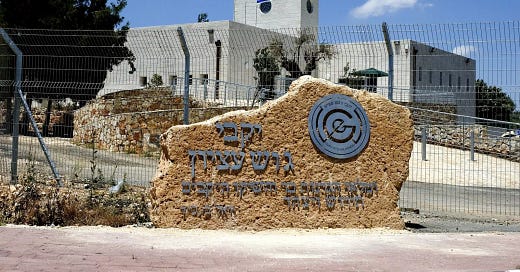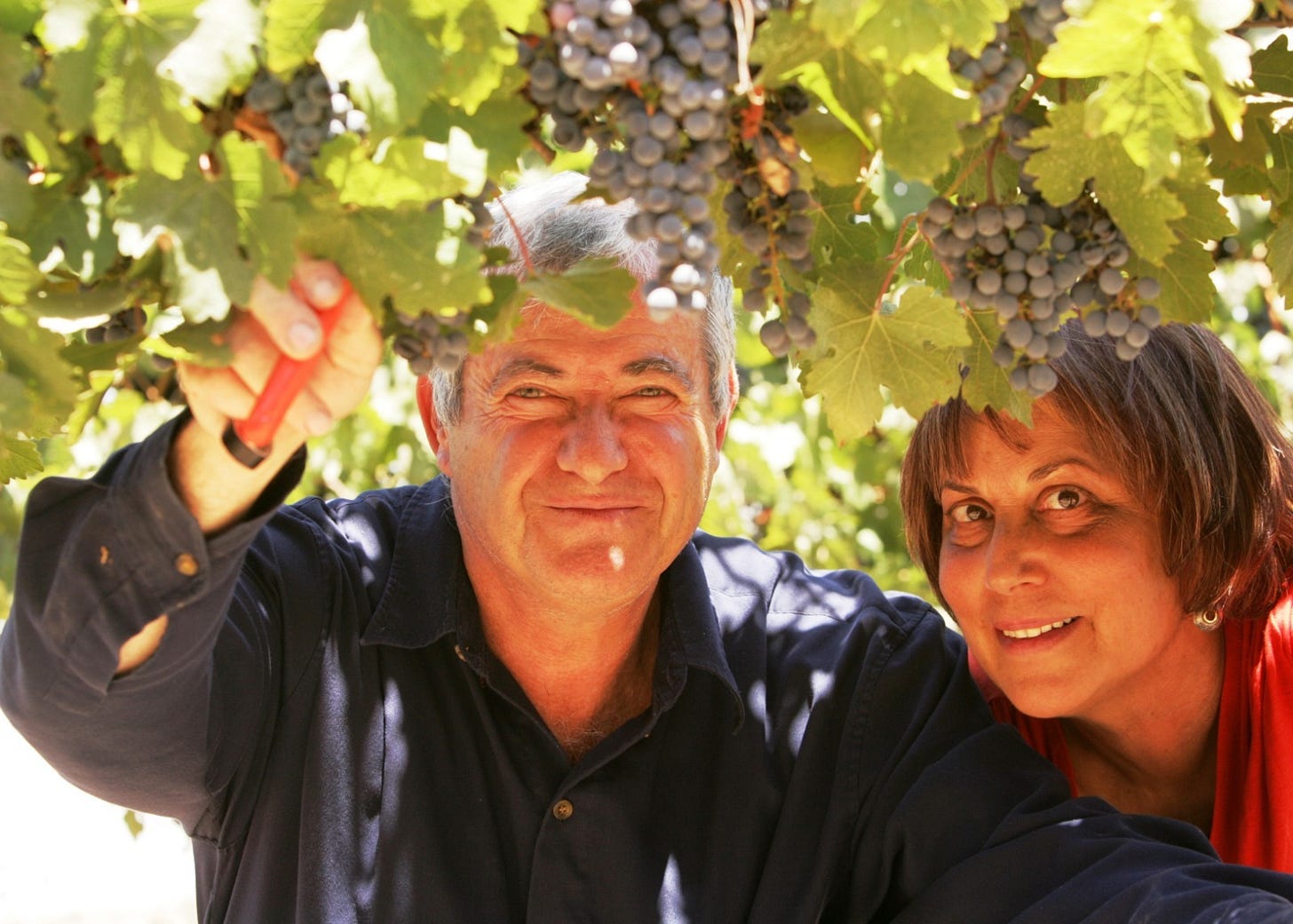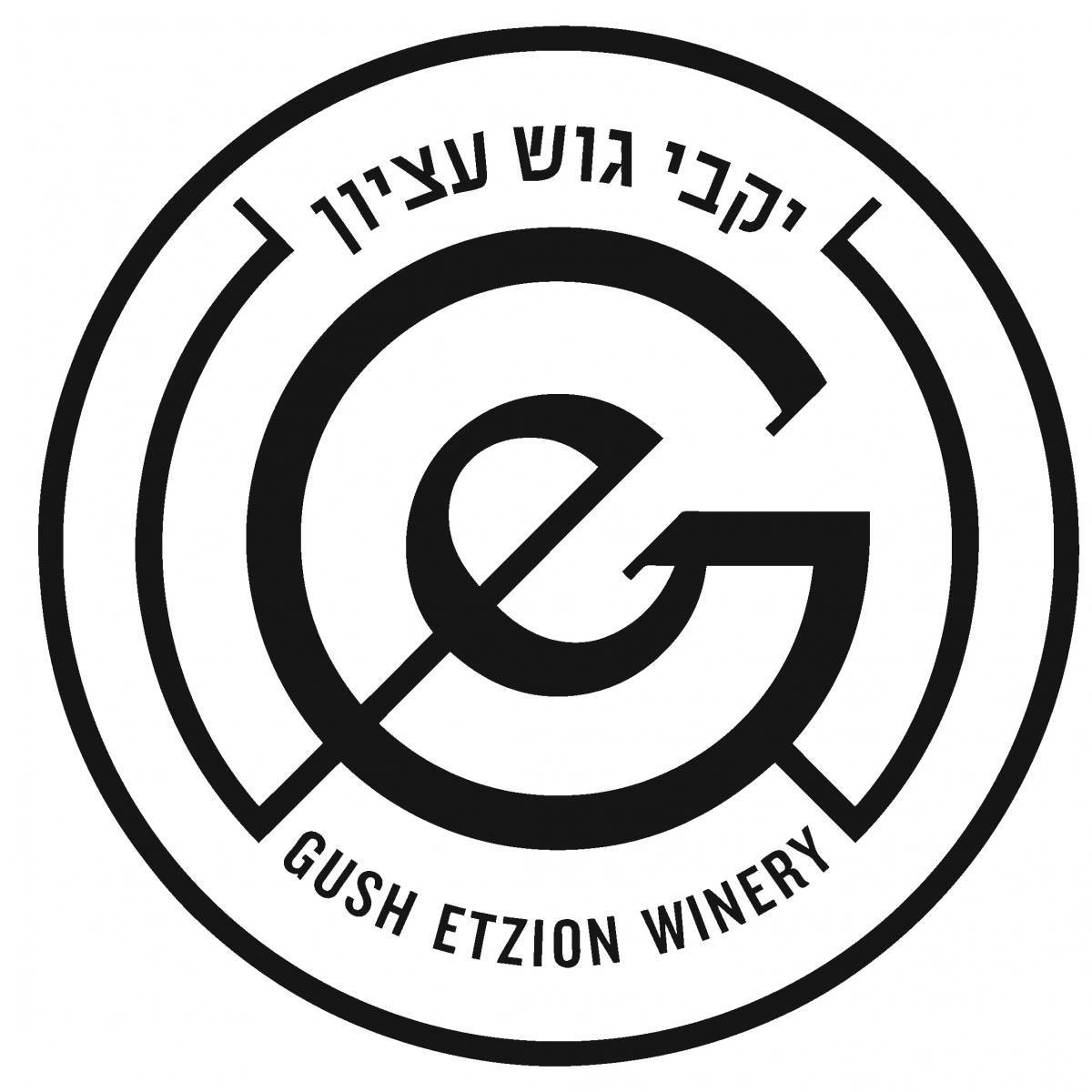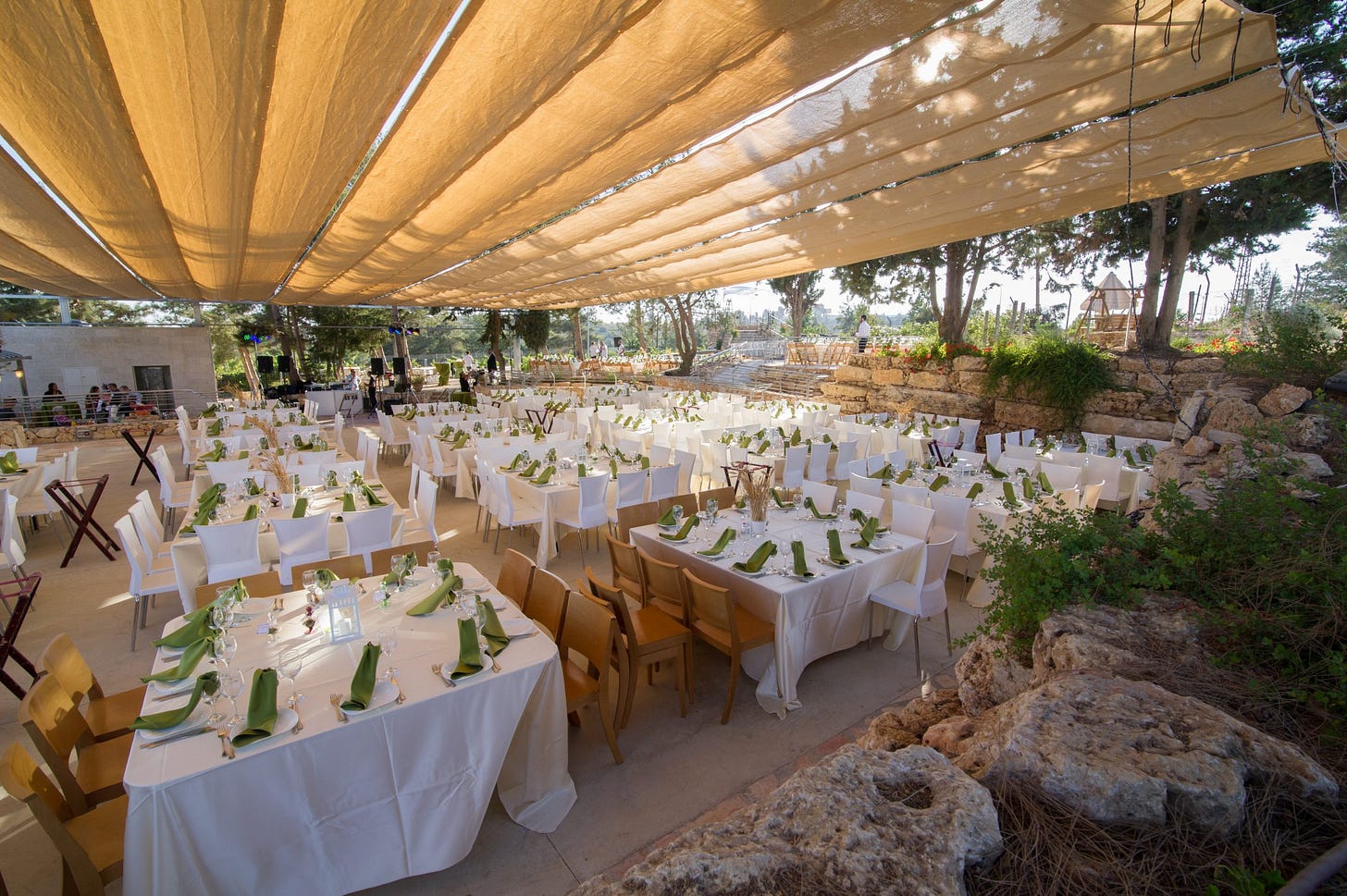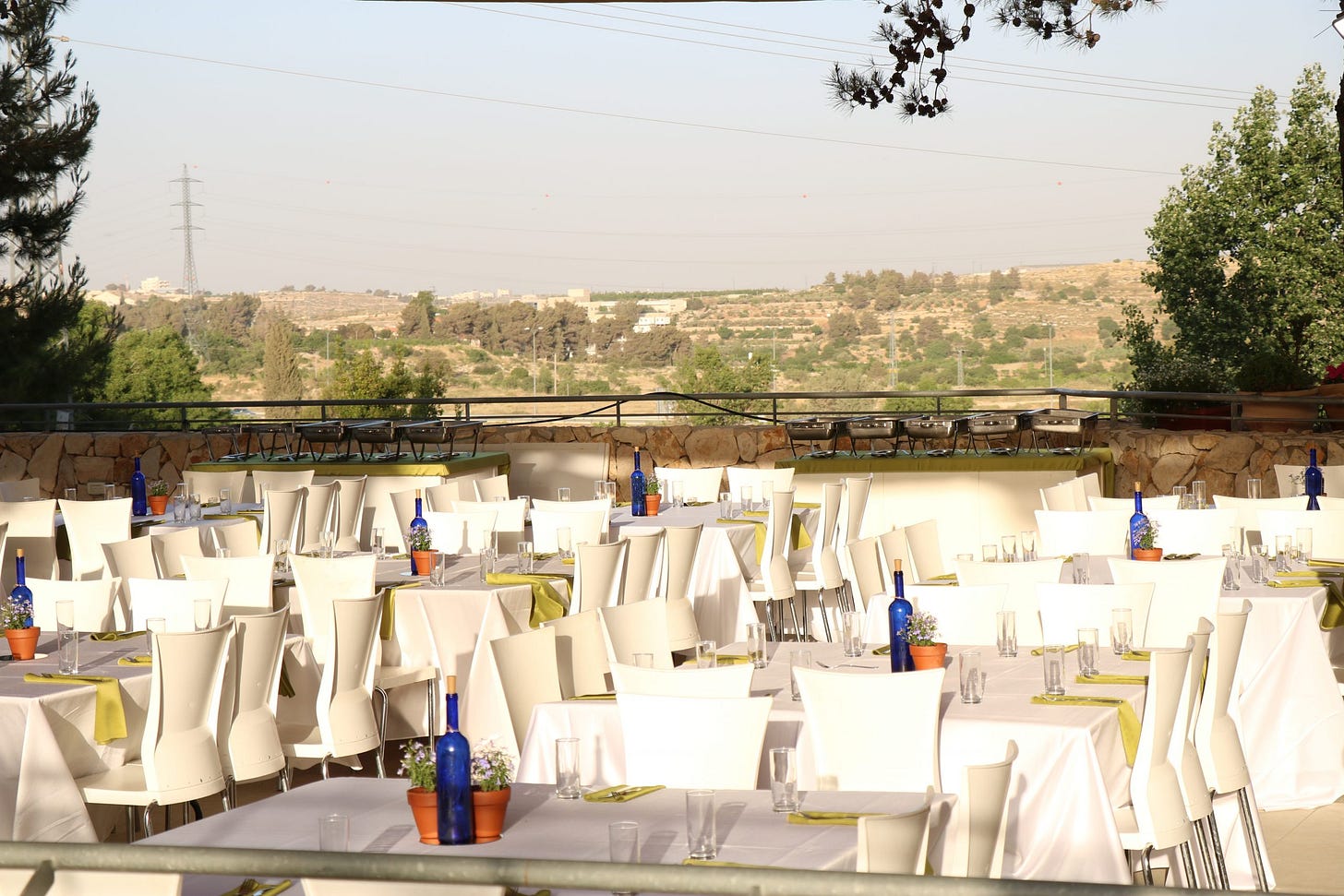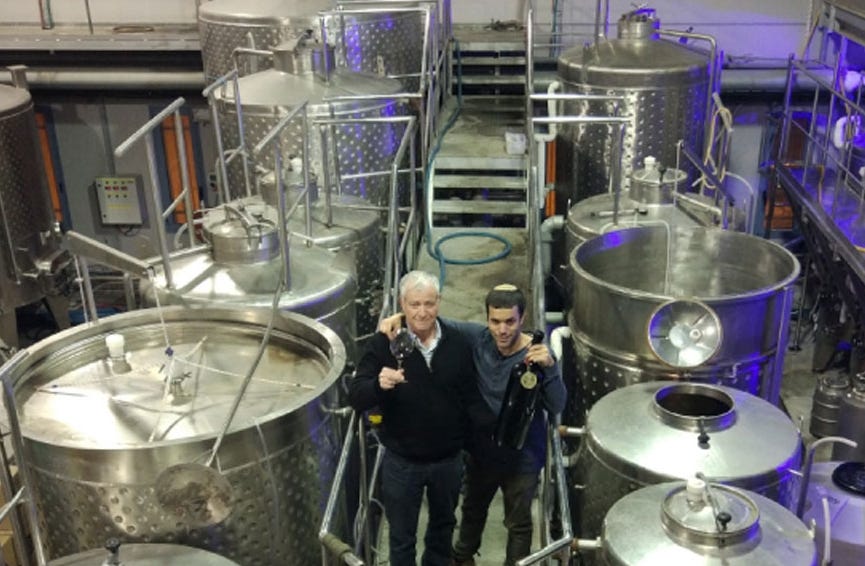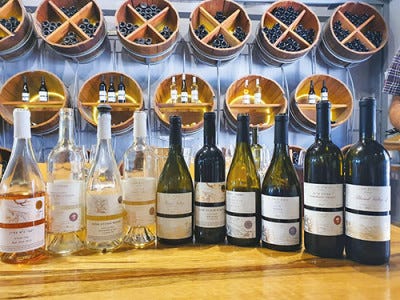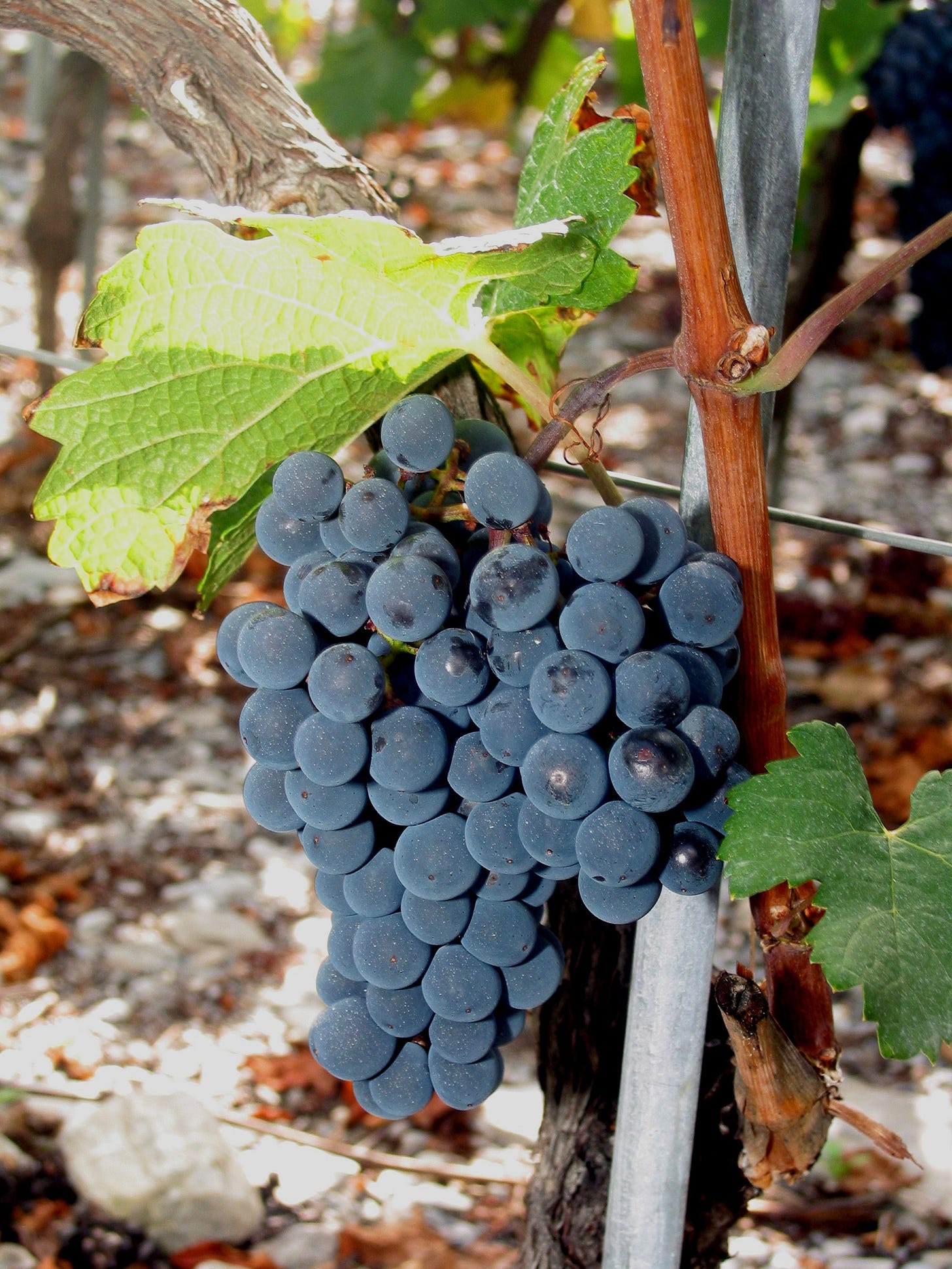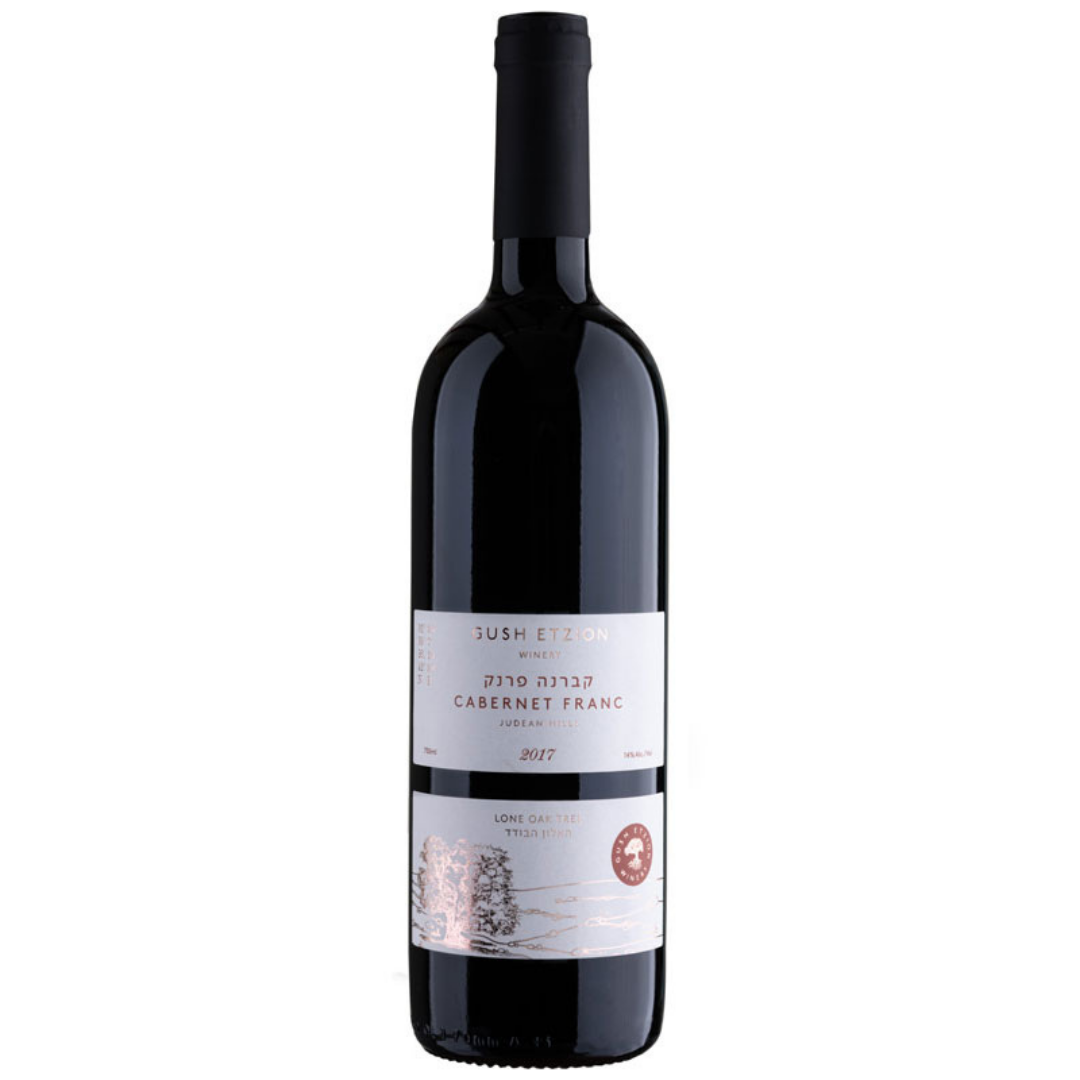Enjoying the Gush Etzion Winery
NOTE:
A much shorter version of this article was just published in the 17 yar 5782/May 18, 2022 English language edition of Hamodia newspaper, and in the May 18, 2022 edition of Yated Ne’eman (available online here), and also in The Jewish Link newspapers (available online here).
One of the many Israeli wineries that has been steadily gaining a wider audience in the United States is the family-run Gush Etzion Winery. A modern Israeli boutique winery on the road to Alon Shvut and Kfar Etzion, the Gush Etzion Winery is about 20 minutes southwest of Jerusalem; it is just off the junction at Highway 60. Attached to the winery is a lovely kosher למהדרין (l’mehadrin; beautifully or scrupulously in accordance with the highest standards of kashrut) dairy and fish restaurant with very satisfying food that rather nicely pairs with the wines produced there. Indeed, with the Jewish holiday of שבועות (Shavuot; lit. Weeks) just around the corner dairy delicacies are likely to be on many a holiday menu and the wines of Gush Etzion should likewise make for a lovely and rewarding accompaniment.
Fruit Wines and Liqueurs
Interestingly, however, the winery’s inspiration began not with grapes but with blackberries and cherries. When Shraga Rozenberg and his late wife Tamar relocated from Jerusalem to Efrat in 1986, their new neighbors informed them that the blackberry bush and cherry tree in their new garden produced abundant fruit. Routinely saddled with more fruit than they knew what to do with, the Rozenberg’s decided to tinker with producing blackberry wine and cherry liqueur in their home.
“When we first came to Efrat,” Rozenberg reminisced during our recent WhatsApp chat, “I wanted to make something with my own hands; something agricultural. So, I began with making blackberry and then also cherry wines and liqueurs.” While these were fun, and locally popular, he wanted to do more.
Before too long Rozenberg progressed from blackberries and cherries to grapes as he began to dream of vineyards and winemaking.
“While playing with blackberries and cherries, I saw grapes being cultivated throughout the area; and historically, wine was a big part of life here; you can see archeological evidence of wine cultivation everywhere here. Back then, however, it wasn’t wine cultivation [in Gush in the late 1980s]—nobody was producing wines in Gush Etzion back then; there were local Arabs cultivating table grapes. But what I really wanted to do was make proper wine, grape wine – not nonsense from blackberry and cherry. I said to myself constantly: ‘I must make wine.’ I became very focused and, really, couldn’t stop myself even if I wanted to.”
Dreaming of the Gush Etzion Winery
A vision took shape for the Rozenbergs’ of establishing a winery in the land of Judea—the area inherited by the שבט יהודה (Shevet Yehudah, or Tribe of Judah) more than 3,000 years ago—and fulfilling once again the biblical blessing of יעקב (Ya’akov or Jacob) the Patriarch. As the Torah in בראשית (Bereshit or Genesis) puts it (chapter 49: verses 11-12):
“Binding unto the vine, his foal, and unto the choice vine, the colt of his donkey; he will launder his garments in wine and his robe in the blood of grapes. His eyes shall sparkle with wine, and his teeth white with milk.”
The preeminent Jewish biblical commentator Rabbi Shlomo Yitzchaki (1040-1105, best known by the Hebrew acronym of his name רש"י or Rashi) comments on these verses, “[Ya’akov] prophesied regarding the land of Yehuda, that it would produce wine like a fountain” in great “abundance.”
Having decided to turn to proper wine production in the early 1990s, the Rozenbergs filed the paperwork to create the company and trademark the Gush Etzion Winery name. They began making wine from grapes purchased elsewhere in Israel and processed into wine in their home.
While producing wine at home, they began slowly and methodically to turn their dream into a commercial venture. Thus, by 1995, the Rozenbergs gave up their day jobs—Sharaga was a social worker and retirement home manager; Tamar was a civil engineer—and devoted their efforts full time to establish the Gush Etzion Winery.
“We didn’t have any great wealth,” he chuckles, “so we had to do everything very slowly and step-by-step.” Fueled by little more than this personal sense of mission and sheer optimism, they also sunk their savings into this new venture and acquired a little land to cultivate grapes.
“In 1996,” he said, “we began planting our own vineyard, and I also convinced the [local] kibbutzim to plant [grape] vineyards. By 1999 I had my own first Cabernet Sauvignon; I vinified it at the Tishbi Winery. Step-by-step, I built it [the Gush Etzion Winery] up from there. I obtained land for the winery, I obtained permits,” and all aimed at a unified family vision “to combine agriculture, tourism, and industry.”
Skip ahead to 2005, when the Rozenbergs—in partnership with the Tishbi Winery of the Binyamin Region, and with the support of an American investor—opened a newly constructed modern winery at its current location (the Rozenbergs remain primary owners). To this was added a modern visitor’s center, the enjoyable kosher l’mehadrin dairy and fish restaurant, and an outdoor event garden/space (a lovely outdoor venue that can accommodate up to 500 guests for weddings and private parties, next to the winery, overlooking the vineyards; see details and the gallery here).
Itay Lahat, Consulting Winemaker
A few years later Rozenberg decided to invest further and seek specialized guidance. “I had no professional training or experience in wine,” he recalls, “so [in 2008] we decided to hire one of the highest-level winemakers as a consultant.” The Rozenbergs’ engaged Itay Lahat, arguably Israel’s most famous wine consultant.
A veteran winemaker with experience in Australia, France, and Israel, Lahat produces his own brand, Itay Lahat Wines, and consults for many different wineries across Israel. Lahat holds a degree in Horticulture from the Hebrew University of Jerusalem, and in Viticulture and Oenology from Adelaide University in South Australia, and also an MBA in Finances and Marketing from the Hebrew University. Before becoming a consultant, Lahat spent seven vintages growing and producing wine from across Israel’s wine regions as the winemaker and viticulturalist for the Barkan Winery, Israel’s largest producer.
“He [Itay Lahat] has helped us tremendously,” says Rozenberg. “Our wines are better now, more focused, more polished, better quality, greater consistency—starting in the vineyard on down to the finished product.”
“In the beginning,” Lahat recalled in our WhatsApp conversation,
“I was helping with every facet of the production, both in the vineyard and in the winery, but as they’ve grown in experience and knowledge and professionalism over the years, they—Shraga and his son Assaf—don’t really need me any more for the day-to-day type decisions.”
Instead, says Lahat, “we tend to have more theoretical or philosophical meetings and discussions now.”
These days, he explained, “we discuss plans and designs for the future—different wines, different blends, different wine styles, or looking to polish or refresh certain existing products and the like.”
For example, Lahat explained further,
“Shraga really likes to have a bit everything and to try to make everything in terms of wines, varieties, blends, styles, and so forth. I mean, Gush Etzion is a small winery, and yet they grow—just amongst their whites—Chardonnay, Sauvignon Blanc, Gewürztraminer, Pinot Gris, Viognier, Roussanne, the only one we’ve stopped is Riesling, and not because they don’t want to do Riesling, but because the specific [vineyard] plot was not good enough. That’s a lot of grape varieties for a small winery. We spend some time discussing these and the styles.”
“With their Gewürz, for example—and to really drill down a bit into the details, they do a traditional semi-dry, and a late harvest [fully sweet] style, but then also a fully dry version. Shraga and Assaf really wanted to do this. I was trying to restrain them as I wasn’t so sure there was really a place for that sort of wine, but they really wanted to try it. Turns out they were right, at least for the time being. It really works well without the [residual] sugar of the more traditional semi-dry version; the dry style is fresher and, to me, a better drinking wine. This is also particular to the character of the fruit available.”

The Gush Etzion Winery Today
At present, the Gush Etzion Winery grows more than a dozen different grape varieties on about 37 acres, producing around 120,000 bottles of wine annually under four different series: עמק ברכה (Emek Bracha or Blessed Valley), האלון הבודד (Alon HaBoded or Lone Oak Tree), נחל הפירים (Nachal HaPirim or Spring River), and the limited edition מגדל עדר (Migdal Eder or Tower of Flocks). Not only has the Gush Etzion Winery proven a critical and modest commercial success, but the winery also inspired many others and today the area has over 150 acres under vine.
At 71 years old, Shraga Rozenberg has no intention of slowing down. “Look, I have given this project my all; the wine industry provides no pension; I hope to be doing this until [I’m] 120.” The winery remains firmly a family affair, however, and his son Assaf is very actively involved in the vineyard management and wine production as well.
White Wine Focus
Though they produce a broad range of wines, twelve of which are currently exported to the United States by the Herzog family’s Royal Wine Corporation, the winery is best known for their fabulous white wines.
“Sauvignon Blanc,” noted Itay Lahat,
“is always one of the best wines of the [Gush Etzion] winery—aromatically and on the palate. I think it can be even better, however, working with some different plots as well—so they’ve made new plantings, which should be online in another few years or so.”
In general, Sauvignon Blanc is popularly produced in a wide variety of styles, including mineral-focused, or grassy/herbaceous, tropical, and citrusy, and stone fruit-forward, as well as lighter or heavier bodied. In our conversation, I mentioned to both Shraga and Itay how much I always enjoy Gush Etzion’s Sauvignon Blanc, and how the wine seems to always surprise me—pleasantly—with a little more heft than expected. This led to further discussion.
Warmer climates, such as is typically found in Israel, tend to produce Sauvignon Blanc with fresh citrus fruit notes, like lemon and grapefruit, and very warm climates tend to also see distinctive ripe, exotic fruits and gooseberry flavors. If it ripens too quickly, the wine may also have lower natural acidity and more of a peach and nectarine aromatic character. There are lots of different directions that growers and winemakers can take it.
“For example,” noted Itay,
“you can aim for a very aromatic Sauvignon Blanc; this is one style that is very popular. Another approach is to aim for a wine that is more persistent, more ageable, more of a bodied wine. The way you make one style can be in direct contrast with how you make the other—the wines are different.”
“The big challenge with Sauvignon Blanc is to hit the right balance between the big appealing aromatic style and a more bodied wine; the goal is to keep it aromatically attractive and engaging enough, but also to be a wine with appealing taste, and body, and depth, and a pleasing finish; and obviously also balanced. To have a wine that is a pleasure to drink, but that also goes well with food. Not to have everything that the wine has to offer just all upfront on the nose with little on the palate.”
“So, we have to make a decision as to when do you pick – always ‘not too early, not too late’; the yeast you choose also makes a difference. We really make an effort to make from one [vineyard] plot [up to] three [separate] fermentations. The temperature of the fermentation matters too; we want it to be warm enough to make a wine with some heft, to fill the palate a bit, while still preserving the aromatic and fruit characteristics. Then we’ll leave the wine on the lees [post-fermentation grape detritus] for a long time to get the autolysis [cell breakdown from self-produced enzymes] from the lees—the natural monoproteins and polysaccharides—to fill the palate, adding to the structure, body, mouthfeel and aromatic complexity of the wine.”
“For all of this, however, you do need striking natural acidity in the grapes—but we have it! Afterall, the Jerusalem Hills are 900 meters [above sea level], so very cool nights even in the summer. So, we have the right qualities in the grapes, and so we go through all this effort—and I think we succeed. Though I’m sure that once we have the new plots online we’ll even take it further.”
“Getting the land is hard enough, then once you get it you then to have to decide what to grow there. So, to choose to plant a hectare to Sauvignon Blanc, or whatever, from amongst the 15 or so varieties that you want to grow…you know, that’s a statement from the winery.”
As Shraga Rozenberg put it,
“we like to focus on our white wines because the white wine grapes do especially well in our area, and nicely reflect our terroir—most of our whites see no oak and all our wines are minimal intervention production; so, they express the land well and make the most of what God gave us in the vineyard.”
Gush Etzion Reds
Though known primarily for their white wines, the red wines of the Gush Etzion Winery should not be overlooked. On the contrary, their reds have been evolving, leaning towards a lighter, more Mediterranean style, and one better suited to the Israeli table.
“Another similar vineyard statement from the Gush Etzion Winery,” observed Itay Lahat, “is their Cabernet Franc.”
Commonly associated with France’s Loire Valley and with the Bordeaux blends of the Libournais, on the right-bank of the Dordogne river, Cabernet Franc is a red grape variety that tends to produce relatively lighter-bodied, less tannic, and less deeply colored wines than, for example, the far more popular Cabernet Sauvignon red grape. Interestingly, though, DNA Profiling research in 1997 by John E. Bowers and Carole P. Meredith of the University of California at Davis established “to a very high degree of probability” that Cabernet Sauvignon is actually the progeny of Cabernet Franc and the white wine grape Sauvignon Blanc.
While climactic conditions obviously matter a great deal, Cabernet Franc generally matures earlier on the vine than Cabernet Sauvignon, and while it shares some aromatic and flavor characteristics as Cabernet Sauvignon, its wines are often said to produce a somewhat green or herbaceous character; green bell pepper being a common descriptor.
“To my mind,” Itay added,
“Cabernet Franc was the best red of the [Gush Etzion] winery—and they were pursuing it well before it became popular worldwide. Now, already, many Israeli winemakers are producing Cabernet Franc wines—but Gush Etzion was one of the first in Israel, and it is one of their best single varietal reds.”
Another early adoption by the Gush Etzion Winery was the pursuit of less heavy, less ripe-styled red wines. As Itay Lahat put it:
“For example, we discussed changing styles at one-point years ago and forecasted a change in consumer tastes away from the notion that the only red wine that matters from Israel was ultra-ripe Cabernet Sauvignon. My thinking was—and Shraga agreed with me—that as wine tastes change and shift further away from ripe Cabernet, so too will Israeli and American Jewish consumer tastes change. It might take time, but I thought that was the future. Happily, we were right. There is still a place for Cabernet Sauvignon, both ripe and more restrained, but there is now also interest in other reds and other styles. Gush Etzion is doing very well with [its] GSM [an acronym for a red blend of wines from the Grenache, Syrah, and Mourvèdre grapes], which is much lighter, slightly lower alcohol, [and made with] no new-oak, very dry, offering more than just fruit [characteristics].”
The Wines of Gush Etzion Winery
All of their wines are enjoyable, non-mevushal, and highly recommended. In particular, consider the following wines:
Gush Etzion Winery, Loan Oak Tree, Rosé, 2021 (Judean Hills, Israel; SRP $25). A brisk, bright blend of 48% Grenache, 43% Mourvèdre, and 9% Pinot Gris, offering notes of slightly underripe strawberries, both raw and gently cooked quince, and light grapefruit aromas and flavors, and all with a subtle slightly drying salinity, making for a tart, mildly fruity, zippy, yummy, and refreshing rosé. Serve chilled, and then give it a little time to open in the glass.
Gush Etzion Winery, Lone Oak Tree, Sauvignon Blanc, 2020 (Judean Hills, Israel; SRP $25). Offers charming aromas and flavors of lemon grass, mild poppy seed, and subtle passion fruit with notes of ripe pear, white pepper, grapefruit, and white peach; decent acidity to keep it lively, and a little more heft on the palate than expected; craves a bit of food. Refreshing and very easy drinking.
Gush Etzion Winery, Lone Oak Tree, Dry Gewürztraminer, Limited Edition, 2021 (Judean Hills, Israel; SRP $25). They also produce a beautiful semi-dry (below) and an enjoyable late harvest edition. This lovely, lively, rich, and aromatic wine offers spicy tropical aromas and flavors of guava, grapefruit, apricots, white peach, and distinct, appealing lychee; while the dry finish continues to catch me ever so slightly off-guard as my wine-geek brain expects some significant residual sweetness with every sip, it is very well made and very refreshing.
Gush Etzion Winery, Lone Oak Tree, Gewürztraminer, 2018 (Judean Hills, Israel; SRP $25). The 2019 vintage is the current release in the USA, but here in Old Blighty I could only find the 2018. They also produce the dry version (see above) and an enjoyable late harvest edition. With classic and abundant lychee and floral notes, this medium bodied semi-dry beauty is complex and concentrated with additional apricot and white peach characteristics, zippy balancing acidity, and a definite yet refined sweetness that makes this particularly light and easy to drink. Don’t overchill, as the cold mutes some of its more refined charms. Yummy.
Gush Etzion Winery, Lone Oak Tree, Viognier, 2021 (Judean Hills, Israel; SRP $25). Grown at an elevation of 950 meters above sea level (around 3,117 feet), this vibrant, aromatic, crisp, refreshing, beautiful wine offers rich aromas and flavors of honeysuckle, peach, tangerine, and honeydew melon; the finish is long, engaging, and very satisfying.
Gush Etzion Winery, Spring River, Red Blend, 2017 (Judean Hills, Israel; SRP $33). The vintage most readily available in the US is the 2019, but here in the UK I found the 2017 on the shelf; in Israel the 2020 is the current release. A delicious blend of 50% Cabernet Sauvignon, 34% Cabernet Franc, 8% Merlot, and 8% Petit Verdot, offering fresh and sprightly aromas of dark berry fruits, tobacco, dark chocolate, a touch of spicy oak and a hint of toasted herbs; the overall style is remarkably light and refreshing on the palate, suggesting a greater appreciation for the cuisine and climate of its Eastern Mediterranean origins. This is nicely balanced, bordering on elegant, yet fun and tasty—while my first thoughts were towards meat, this would work well with heavier dairy dishes too.
Gush Etzion Winery, Spring River, GSM, 2020 ($33): The 2019 vintage is the current release in the US, but here in the UK I found only the 2020. This is an engaging bright, fresh, and refreshing red blend. Medium bodied with forward and generous dark fruit notes, decent spice, and a hint of earth, balanced by soft tannins and nice acidity; offers a deeply pleasing finish. This is very yummy, with a very subtle but enjoyable brooding edge.
Gush Etzion Winery, Cabernet Franc Reserve, Judean Hills, 2017 ($45): A medium-bodied, well-structured red with ripe dark plum and spicy black cherry fruits, accents of chocolate, cassis, a touch of anise, and pepper, and then with vanilla and leather in the slightly though pleasingly bitter finish. Absorbing and rewarding, with nice overall balance.
L’chaim!
About me:
By way of background, I have been drinking, writing, consulting, and speaking professionally about kosher wines and spirits for more than 20 years. For over a dozen years I wrote a weekly column on kosher wines and spirits that appeared in several Jewish publications, and my writing generally has appeared in a wide variety of both Jewish and non-Jewish print and online media. A frequent public speaker, I regularly lead tutored tastings and conduct wine and spirits education and appreciation programs. Those interested in contacting me for articles or events can do so at jlondon75@gmail.com.
In what seems like a lifetime ago, I also wrote an entirely unrelated slice of American history: Victory in Tripoli: How America’s War with the Barbary Pirates Established the U.S. Navy and Shaped a Nation (John Wiley & Sons, 2005).
These days I divide my time between London (UK), and Washington, DC.
